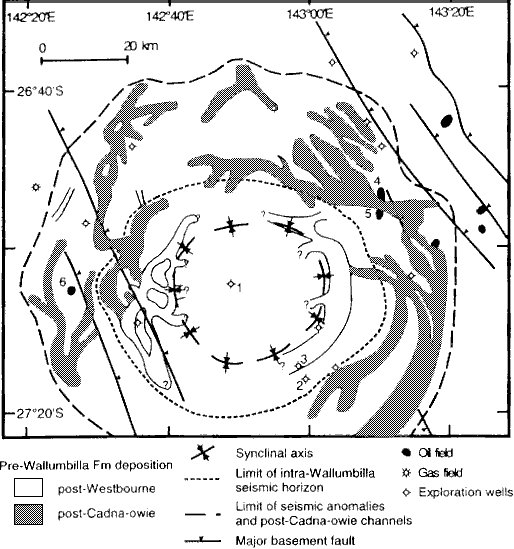
Спутниковая фотография кратера из Google Earth.  Геологическая карта кратера The clasts consist of impact breccia fragments, as well as devitrified impact melt glass. Breccia samples have also been found during drilling into the central uplift dome; these breccias have a devitrified glassy matrix, with angular clasts. (Gostin, Therriault, 1997). |
На главную